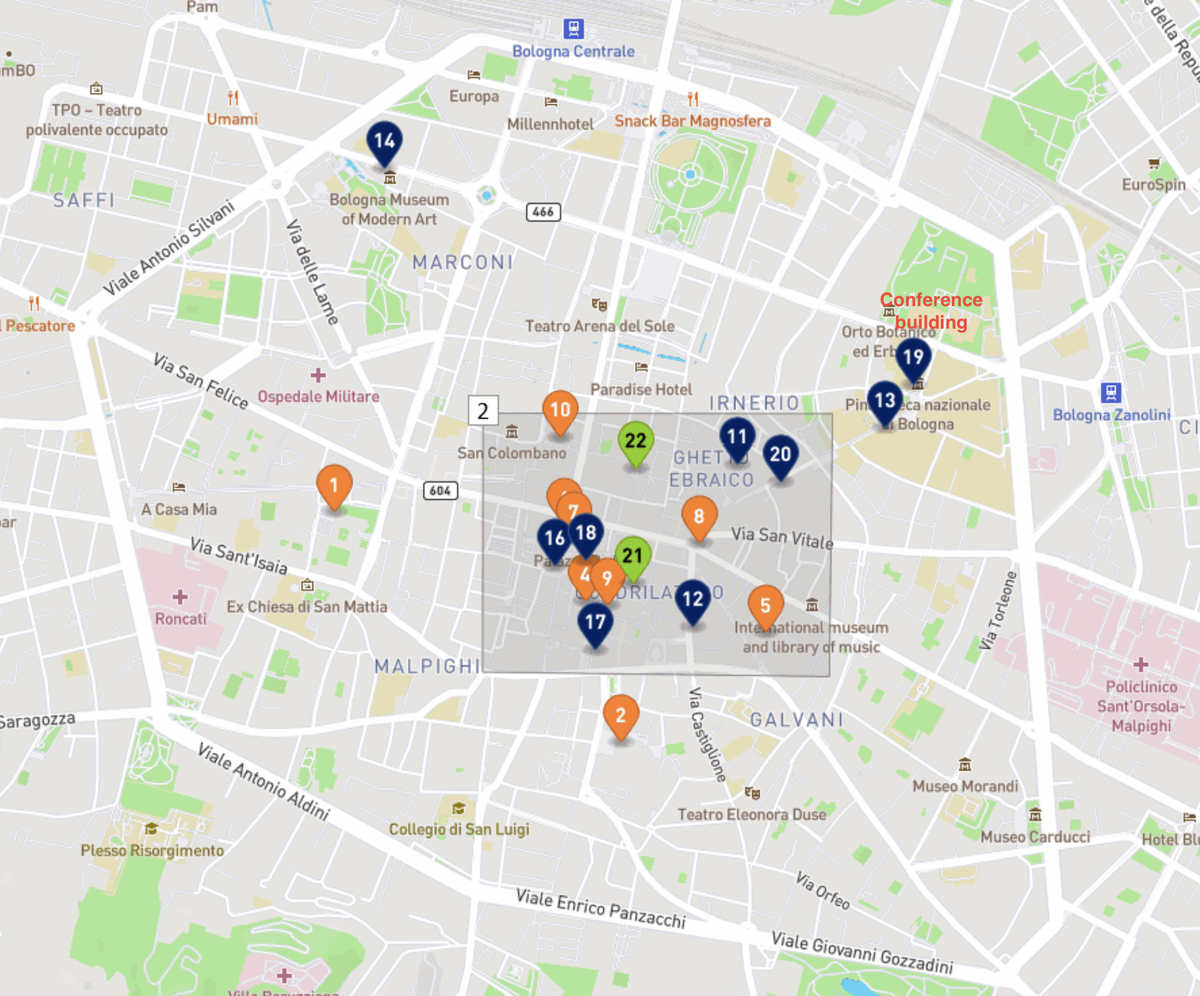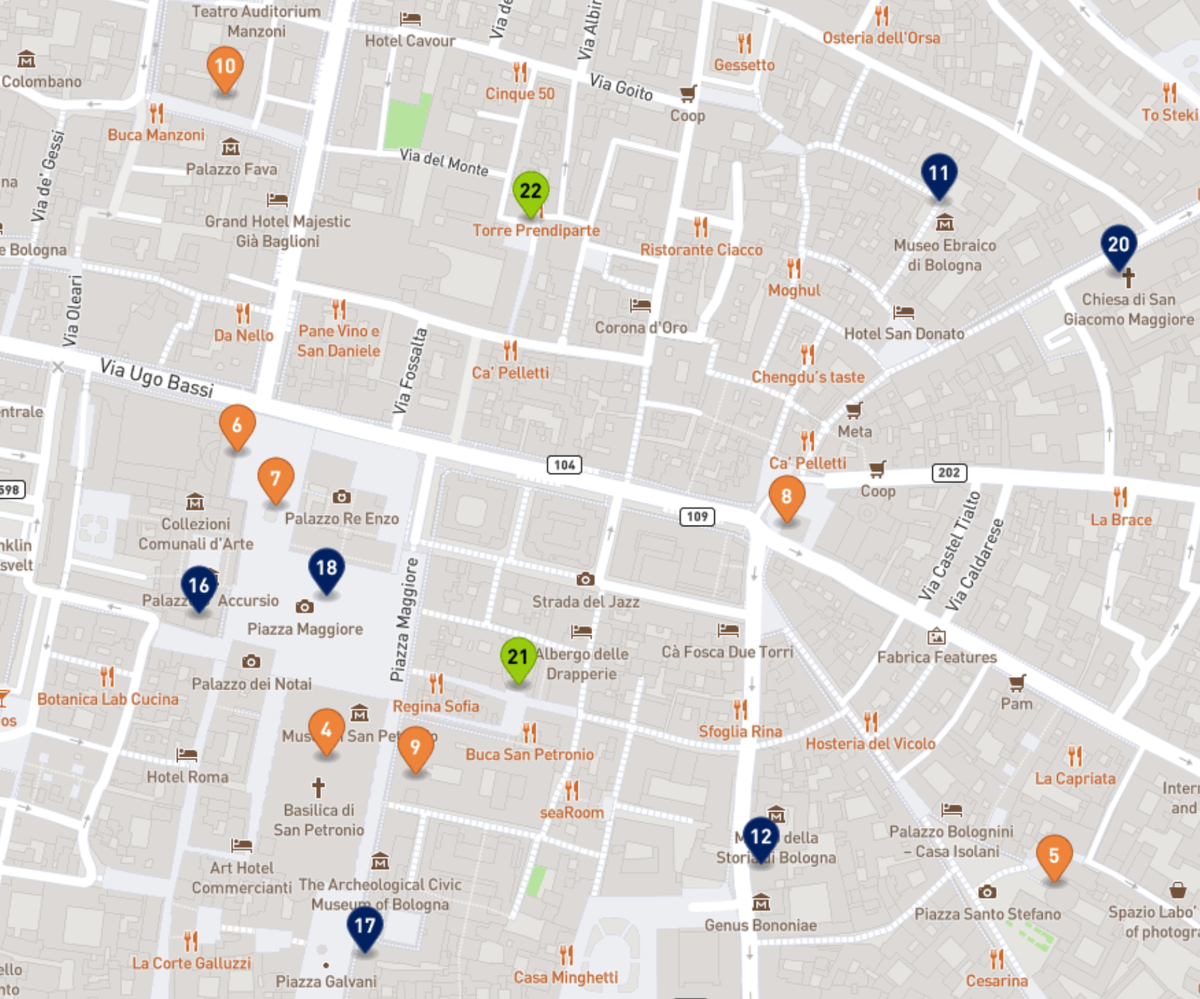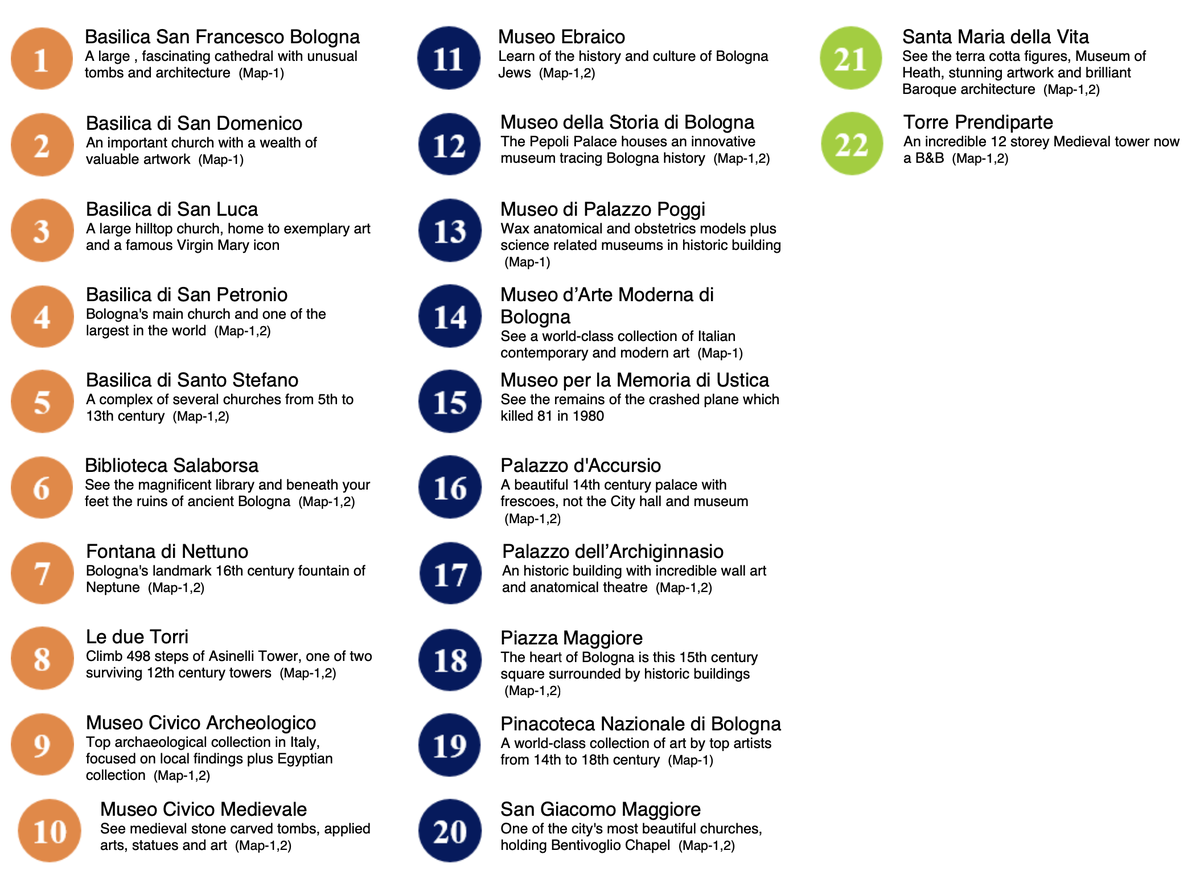Discover Bologna
-
Piazza Maggiore, the beating heart of the city, a meeting point for citizens and venue for events all year round. The centre of the square is dominated by the crescentone, a raised pavement made of white and pink granite, while the surrounding area is dotted with some of the city's most notable buildings: Palazzo D'Accursio, seat of the City Hall and the Clock Tower; the Basilica of San Petronio, Bologna's largest church; Palazzo dei Banchi, a private building; and finally Palazzo del Podestà.
- Piazza del Nettuno: next to Piazza Maggiore is the city's second best-known square, boasting the unmistakable statue of the Roman god of the sea, sculpted by Giambologna in the 16th century, surrounded by putti, dolphins and mermaids. Another interesting place to visit from Piazza del Nettuno is the Salaborsa, the city's main library, open to the public free of charge with its splendid covered square and glass floor offering a view of the ancient Roman ruins underneath.
- The religious complex of Santo Stefano is one of the most unique architectural features of the city: also known as the "Seven Churches", this surprising monument is composed of several buildings erected over the centuries side by side, forming a single construction with different architectural styles that amaze the visitor from room to room. Small historical tidbit: the basilica it is also said to have been a favourite haunt of Dante Alighieri during his study period in Bologna.
- Ever since Medieval times, Mercato di Mezzo (the Middle Market) has been a place of flavours, encounters, trade, memory and gastronomic tradition.
After the Unification of Italy, it was transformed into the city’s first covered market and, after the redevelopment of 2014, it is now a place where one can purchase or eat food and wine products and delicacies. - The luxurious Portico del Pavaglione, on the left of the Basilica of San Petronio, leads to the entrance of Palazzo dell'Archiginnasio, the oldest building of the University of Bologna, built between 1562 and 1563 and currently serving as the university library. The 6000 coats of arms of the families of the students who attended the university immediately catch the visitor's eye.
- There are more than 50 museums in Bologna, spanning different themes and historical periods with a rich selection of works. Whether public or private, we cannot but mention the MamBO, museum of modern art and the Museum of the History of Bologna. Finally, painting enthusiasts should not miss the Pinacoteca Nazionale in the university area.
- In the Middle Ages, Bologna used to be criss-crossed by an extensive network of canals, exploited for silk mills and used to transport goods and people. Over time, the canals were gradually buried, either for hygienic reasons or for convenience, with one exception: the Moline Canal, still visible from an intriguing little window hidden under the portico of Via Piella, otherwise known as "Little Venice".
- Outdoor enthusiasts should not miss the UNESCO world's longest portico, winding its way for 4 kilometres right out of the city centre and up into the hills to the Sanctuary of San Luca, a traditional walking destination for the Bolognese and one of the city's best-loved symbols.
More information on Bologna Welcome


